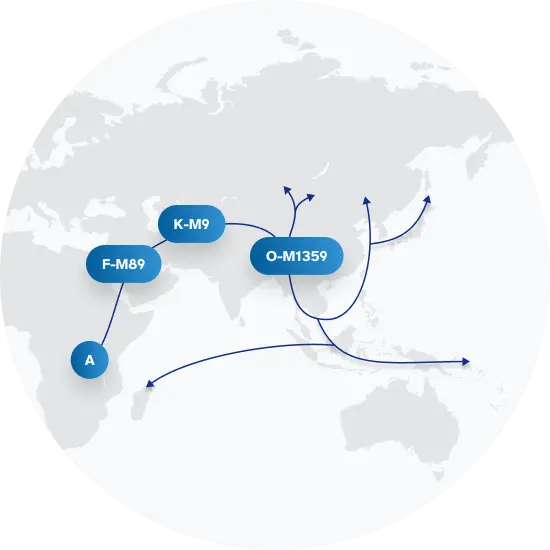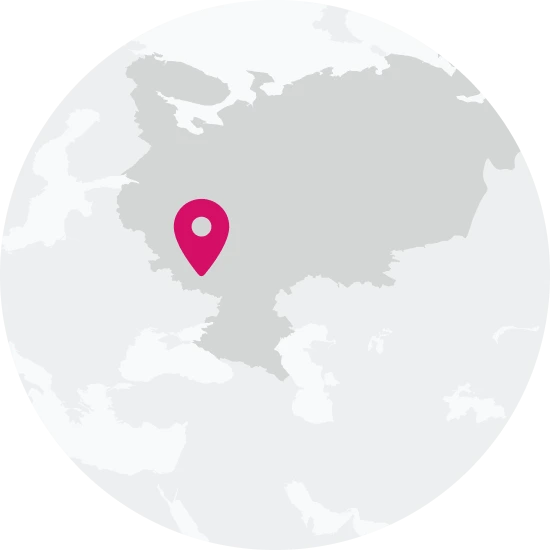Explore the Family Name Goel
How common is the last name Goel in the United States?
Based on the Decennial U.S. Census data, the surname Goel has seen an increase in popularity between 2000 and 2010. In the year 2000, it was ranked 19,136th among common U.S surnames but jumped significantly to 13,660th by 2010, reflecting a change of approximately 28.62 percent. During this time, the count of individuals with this surname rose from 1,314 to 2,216, a surge of nearly 68.65 percent. In terms of proportion per 100,000 people, the surname went from being borne by 0.49 people in every 100,000 in 2000 to 0.75 in 2010; this represents an increase of 53.06 percent.
| 2000 | 2010 | Change | |
|---|---|---|---|
| Rank | #19,136 | #13,660 | 28.62% |
| Count | 1,314 | 2,216 | 68.65% |
| Proportion per 100k | 0.49 | 0.75 | 53.06% |
Race and Ethnicity of people with the last name Goel
The ethnicity breakdown for the surname Goel also changed over this decade, as per the Decennial U.S. Census data. The largest ethnic identity associated with this surname is Asian/Pacific Islander, which increased from 87.44 percent in 2000 to 90.3 percent in 2010. Conversely, the percentage of Goels identifying as White decreased by 18.81 percent, and those identifying as Hispanic decreased by 40.91 percent. However, there was a small emergence of Goels identifying as Black and American Indian and Alaskan Native, both at 0.41 percent in 2010, where there had been none (or data was suppressed) in 2000. The percentage of people with this surname identifying with two or more races also declined from 2.82 percent in 2000 to 1.85 percent in 2010.
| 2000 | 2010 | Change | |
|---|---|---|---|
| Asian/Pacific Islander | 87.44% | 90.3% | 3.27% |
| White | 7.23% | 5.87% | -18.81% |
| Two or More Races | 2.82% | 1.85% | -34.4% |
| Hispanic | 1.98% | 1.17% | -40.91% |
| Black | 0% | 0.41% | 0% |
| American Indian and Alaskan Native | 0% | 0.41% | 0% |
Goel ancestry composition
23andMe computes an ancestry breakdown for each customer. People may have ancestry from just one population or they may have ancestry from several populations. The most commonly-observed ancestry found in people with the surname Goel is Northern Indian & Pakistani, which comprises 86.7% of all ancestry found in people with the surname. The next two most common ancestries are Bengali & Northeast Indian (2.8%) and French & German (2.7%). Additional ancestries include British & Irish, Southern Indian & Sri Lankan, Southern Indian Subgroup, Gujarati Patidar, and Indigenous American.
Ready to learn more about your ancestry? Get the most comprehensive ancestry breakdown on the market by taking our DNA test. Shop 23andMe
| ANCESTRY BREAKDOWN | COMPOSITION |
|---|---|
| Northern Indian & Pakistani | 86.7% |
| Bengali & Northeast Indian | 2.8% |
| French & German | 2.7% |
| Other | 7.7% |

Possible origins of the surname Goel
Your DNA provides clues about where your recent ancestors may have lived. Having many distant relatives in the same location suggests that you may all share common ancestry there. Locations with many distant relatives can also be places where people have migrated recently, such as large cities. If a large number of individuals who share your surname have distant relatives in a specific area, it could indicate a connection between your surname and that location, stemming from either recent ancestral ties or migration.
Based on 23andMe data, people with last name Goel have recent ancestry locations spanning a few countries, mostly in Pakistan, and India.
| RECENT ANCESTRY Location | Percentage |
|---|---|
| Punjab, Pakistan | 12.90% |
| Punjab, India | 11.30% |
| Madhya Pradesh, India | 11.30% |
| Uttar Pradesh, India | 11.30% |
| Sindh, Pakistan | 9.70% |
What Goel haplogroups can tell you
Haplogroups are genetic population groups that share a common ancestor on either your paternal or maternal line. These paternal and maternal haplogroups shed light on your genetic ancestry and help tell the story of your family.
The top paternal haplogroup of people with the surname Goel is O-F2415, which is predominantly found among people with East Asian & Indigenous American ancestry. Haplogroup O-F2415 is descended from haplogroup O-M1359. Other common haplogroups include E-M183 and O-F2859, which are predominantly found among people with European and East Asian & Indigenous American ancestry.
The most common maternal haplogroups of people with Goel surname are: M, U2, R. These most commonly trace back to individuals of European ancestry.
 Paternal Haplogroup Origins O-M1359
Paternal Haplogroup Origins O-M1359
Your paternal lineage may be linked to the Cham
One of the many populations harboring members of haplogroup O1b1a1a1a1 is the Cham ethnic group, a group of people who speak Austronesian languages in Mainland Southeast Asia. Austronesian languages make up a language family that is extremely large and widespread, comprising over 350 million people on islands such as Madagascar, Easter Island, and many others. However, Austronesian languages are less common on mainland Asia, with a notable exception being the Chamic language. Research suggests that ancestors of the Cham people migrated from Southeast Asian islands to the mainland around the year 500 BCE, and that early Cham populations quickly began mixing with indigenous southern Vietnamese populations. As a result, the Chamic language now has words that were borrowed from languages spoken by indigenous Vietnamese people. It is likely that an ancestral Kinh population was one of the populations that mixed with the Cham people shortly after their migration to mainland Asia.
Your maternal lineage may be linked to the Markina Gora man
At an estimated 36,000 years old, the Markina Gora Skeleton is the second most ancient modern human to have his DNA fully sequenced. He was discovered in 1954 in southwest Russia, and recently analyzed to find clues about ancient European ancestry.This man is estimated to have been 20 to 25 years old, and at just below 5'2'' tall, he was short by modern standards. His DNA contained variants that suggested he had dark skin and brown eyes, and his skeletal features suggest he looked much like populations from tropical regions of the world, suggesting recent migration to the north. He also had more Neanderthal DNA than is found in Asians and Europeans today, which supports the hypothesis that humans mixed with Neanderthals early on in our history beyond Africa.

What do people with the surname Goel have in common?
Spoiler alert: it's complicated. People with the same last name are usually no more genetically similar than a randomly sampled group of people from the same population. That said, people with the same surname are more likely to have similar ancestries than randomly sampled individuals. The reason is the tendency of people with similar cultural or geographical backgrounds to preferentially mate with one another. That's why people who share a surname may be more likely to share traits and tendencies in common than people within the general population. Check out the percentages below to see the prevalences of tastes, habits, and traits of people with your surname compared with prevalences among 23andMe users.
Preferences

Vanilla Ice Cream
Prefers vanilla flavored ice cream over other flavors.
"Goel" Surname 38.5%
23andMe Users 36.7%
Are health conditions linked to the last name Goel?
The short answer is that, if there is an association between surname and health, it's usually more about your ancestry than your name. Individuals with a given surname are no more genetically similar than the general population but often have similar ancestries. The populations of people associated with those shared ancestries often have sets of genetic variations, also known as alleles, in common. Some of those alleles are associated with a greater likelihood of developing certain diseases.
Disease variant frequency by ancestry
Disease allele frequencies in populations associated with the surname Goel are shown below. Important Note: not everyone with a disease allele will develop these health condition
